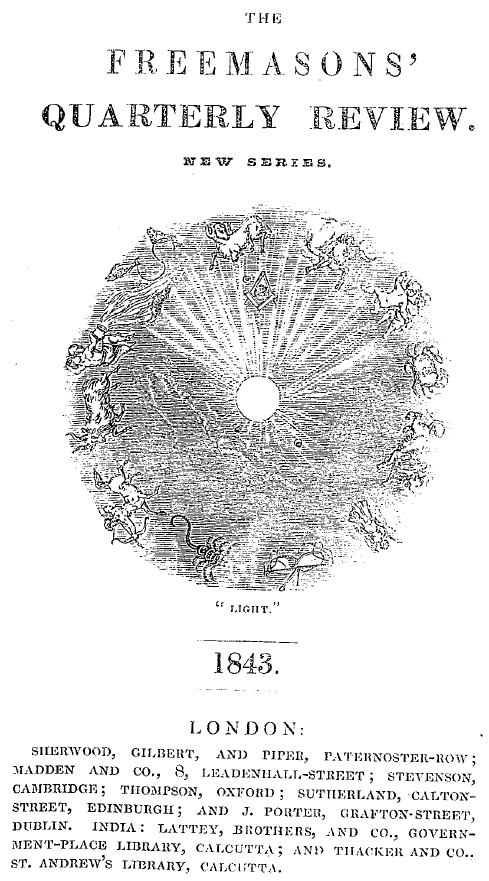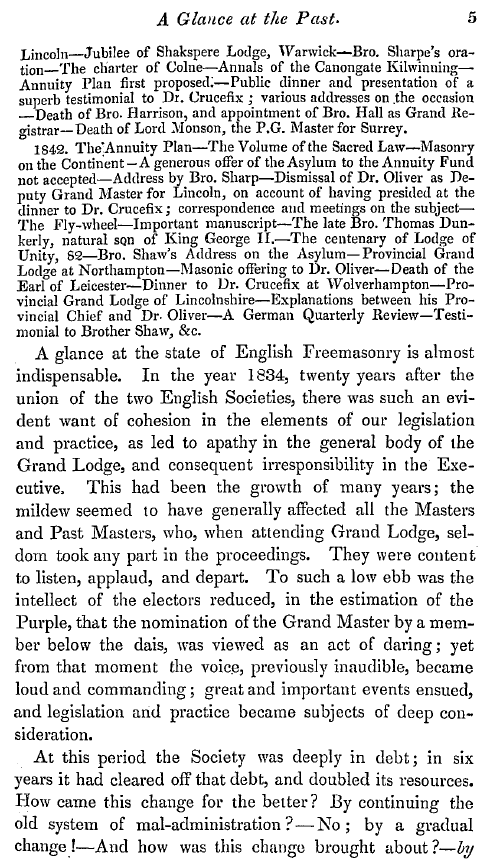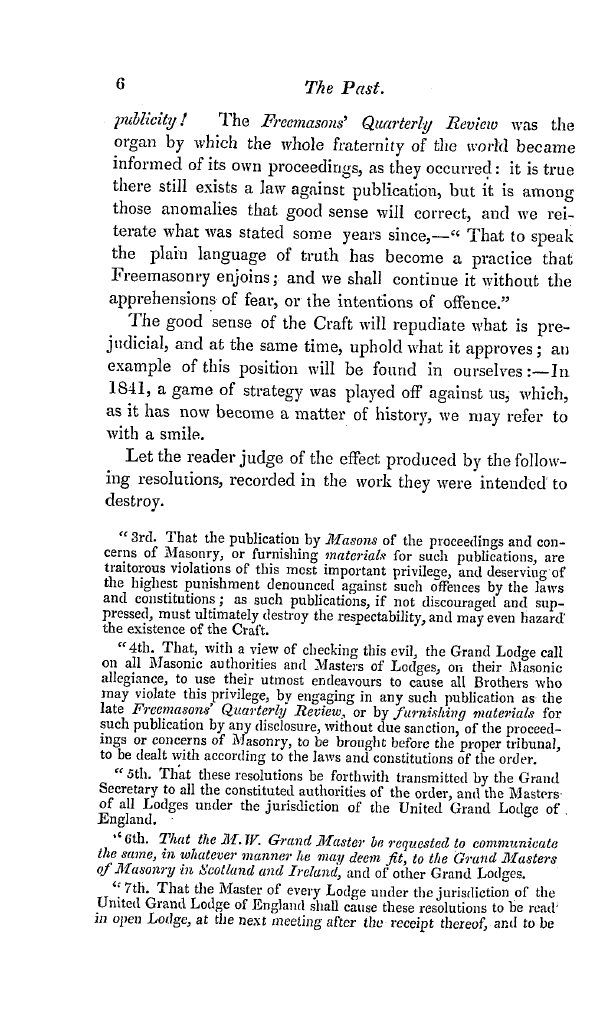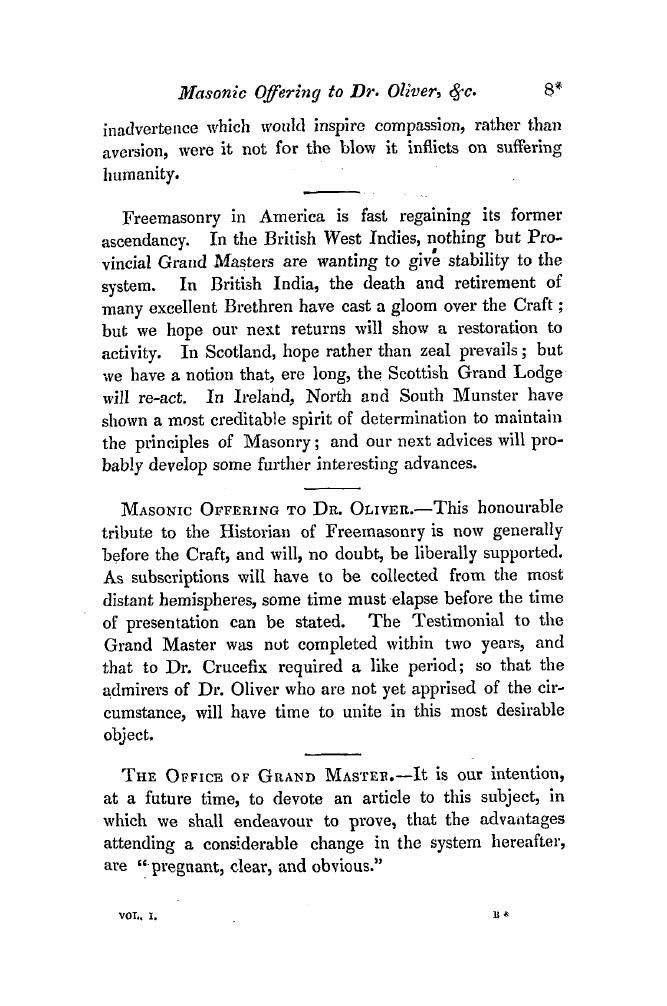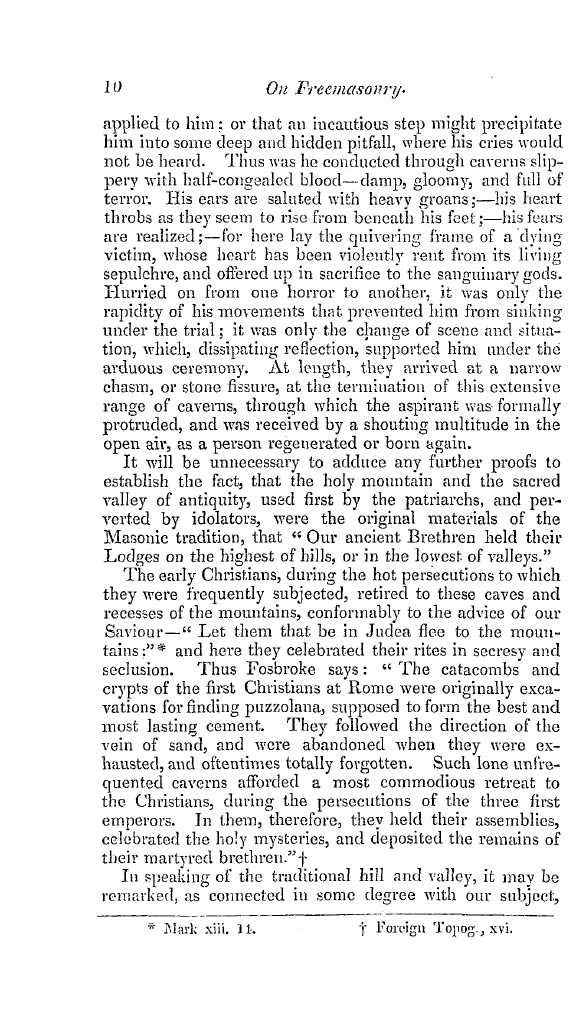-
Articles/Ads
Article M. CLAVEL'S PICTURESQUE MASONRY. ← Page 3 of 5 →
Note: This text has been automatically extracted via Optical Character Recognition (OCR) software.
M. Clavel's Picturesque Masonry.
and it is probable that they did not confine the exercise of their architectural knowledge to this private exercise of it . They had mysteries and a system of initiation ; candidates were subjected to three years ' probation , and after their reception they were invested with a white apron . Philo of Alexandria , who gives some details about the Essenians of Egypt , states particularly that when they were assembled , listening to the instructions of their mastersthey kept the right hand the
, upon breast , a little below the chin , and the left hand down along the side . This peculiarity is most important . The sign which it indicates will be easily understood by Freemasons . * " " * * * * * * -:: " Whatever may be thought with respect to the identity of the Jewish Masons and the Dionysiasts , it is undeniable that the latter were the origin of the associations of Roman architects . In fact , about the year 714 before our eraNuma instituted at Rome colleges of artisans (
col-, , legia artificum ) , amounting in number to 131 ; at the head of which he placed the colleges of architects , ( collegia fabrorum ) . These bodies were also called by the names of societies or fraternities , ( sodalitates vet fraternitates ) . Their first masters were Greeks , whom Numa had brought expressly from Attica to organize them . From this period may be dated the establishment , at Rome , of the ' Liberates / or fetes of Bacchus .
" The eighth of the twelve tables , derived , as we know , from the laws of Solon , contains the general regulations applicable to the Roman colleges . These bodies had the ri ght to make statutes for their own government , and to conclude contracts , provided neither was opposed to the laws of the country . They had a separate jurisdiction under their own judge . The colleges of architects were amongst the few who
enjoyed immunity from taxes ; and this privilege , which was continued to the corporations of building artists during the middle ages , is the origin of the name ' Freemasons , ' given to their membeis . " The Roman colleges , both the civil bodies and the reli gious institutions , and their relative condition in reference to the state and the priesthood , were defined with precision by the law . They held their meetings with closed doors , and carefully excluded the uninitiated . The macerice , 01
lodges in which they assembled , were generally situated near the temples of those gods whom they held in highest veneration , and the priests of which employed them either as builders , or providers of the sacred utensils . In these assemblies , at which the decisions were taken by a majority of votes , the Brethren decided on the distribution and execution of their labour , and initiated the new members in the secrets of their arts and their private mysteries , one of the characteristic features
of which was the symbolical employment of the tools of their profession . The Brethren were divided into three classes : apprentices , companions , and masters ; they bound themselves , mutuall y / by a solemn obligation , to give each other help and assistance ; they recognised one another by certain secret signs ; and the diplomas which were given to them helped thenceforward to show the rank to which they had reached . Their presidents , who were elected for five years , were called masters , (
ptagistri ) . They had past-masters , ( seniores ) , superintendents , censors , treasurers , who received the monthly subscription required from each member , keepers of the seal , archivists , secretaries , their own physicians , and serving brethren . They had the power of admitting as honorary members , as honorary officers , and even as honorary ladies , ( matroncs ) , persons who did not belong to their profession ; but as this privilege sometimes opened the way to holding forbidden religious and political
Note: This text has been automatically extracted via Optical Character Recognition (OCR) software.
M. Clavel's Picturesque Masonry.
and it is probable that they did not confine the exercise of their architectural knowledge to this private exercise of it . They had mysteries and a system of initiation ; candidates were subjected to three years ' probation , and after their reception they were invested with a white apron . Philo of Alexandria , who gives some details about the Essenians of Egypt , states particularly that when they were assembled , listening to the instructions of their mastersthey kept the right hand the
, upon breast , a little below the chin , and the left hand down along the side . This peculiarity is most important . The sign which it indicates will be easily understood by Freemasons . * " " * * * * * * -:: " Whatever may be thought with respect to the identity of the Jewish Masons and the Dionysiasts , it is undeniable that the latter were the origin of the associations of Roman architects . In fact , about the year 714 before our eraNuma instituted at Rome colleges of artisans (
col-, , legia artificum ) , amounting in number to 131 ; at the head of which he placed the colleges of architects , ( collegia fabrorum ) . These bodies were also called by the names of societies or fraternities , ( sodalitates vet fraternitates ) . Their first masters were Greeks , whom Numa had brought expressly from Attica to organize them . From this period may be dated the establishment , at Rome , of the ' Liberates / or fetes of Bacchus .
" The eighth of the twelve tables , derived , as we know , from the laws of Solon , contains the general regulations applicable to the Roman colleges . These bodies had the ri ght to make statutes for their own government , and to conclude contracts , provided neither was opposed to the laws of the country . They had a separate jurisdiction under their own judge . The colleges of architects were amongst the few who
enjoyed immunity from taxes ; and this privilege , which was continued to the corporations of building artists during the middle ages , is the origin of the name ' Freemasons , ' given to their membeis . " The Roman colleges , both the civil bodies and the reli gious institutions , and their relative condition in reference to the state and the priesthood , were defined with precision by the law . They held their meetings with closed doors , and carefully excluded the uninitiated . The macerice , 01
lodges in which they assembled , were generally situated near the temples of those gods whom they held in highest veneration , and the priests of which employed them either as builders , or providers of the sacred utensils . In these assemblies , at which the decisions were taken by a majority of votes , the Brethren decided on the distribution and execution of their labour , and initiated the new members in the secrets of their arts and their private mysteries , one of the characteristic features
of which was the symbolical employment of the tools of their profession . The Brethren were divided into three classes : apprentices , companions , and masters ; they bound themselves , mutuall y / by a solemn obligation , to give each other help and assistance ; they recognised one another by certain secret signs ; and the diplomas which were given to them helped thenceforward to show the rank to which they had reached . Their presidents , who were elected for five years , were called masters , (
ptagistri ) . They had past-masters , ( seniores ) , superintendents , censors , treasurers , who received the monthly subscription required from each member , keepers of the seal , archivists , secretaries , their own physicians , and serving brethren . They had the power of admitting as honorary members , as honorary officers , and even as honorary ladies , ( matroncs ) , persons who did not belong to their profession ; but as this privilege sometimes opened the way to holding forbidden religious and political
